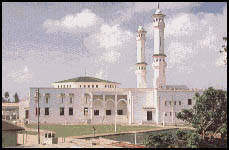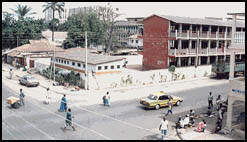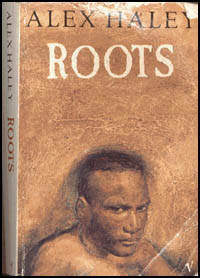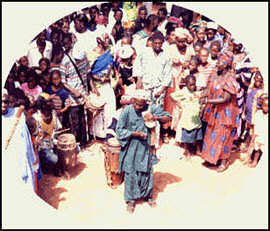 HISTORY HISTORY |
The Bank of The River Gambia has been inhabited for many centuries. Hanno, The Carthaginean, referred to Gambia while writing about his voyage to West Africa in 470 B.C. It is known that between the 5th and 8th centuries most of the Senegambian Area came from the Sarahuley ethnic group, and those descendants can be found in The Gambia.

The Ghana Empire, which had its capital in present day Mauritania, soon gave way to the Songhais, who latter became Muslims and promoted their new faith zealously. Around the 13th century, however, Mandingoes and Susus' from the Futa Jallon Plateau had established themselves in what is now Mali, and from there controlled the whole of The Gambia Basin. The Gambia was then inhabited mainly by wollofs on the Northern bank and Jolas on the southern bank of the River. When the Mali Empire declined at the end of the 16th century, the Mandingo leaders retired to the Futa Jallon, but continued to have influence over the Casamance (Southern Senegal) and The Gambia until early in the 18th century. Later The Fula invaders penetrated the region. The Ancestors of the Fulas had come from Africa and earlier had founded the famous Emirates of' Northern Nigeria.
During the 18th and 19th centuries, there were protracted wars between the Islamic Marabouts and the Pagan Soninkis. The British, who already established themselves at Banjul by this time, offered protection to the various chiefs during these conflicts, and through treaties, soon brought The Gambia region under their control.
Before the British, some Portuguese had come to The Gambia following the expeditions promoted by Prince Henry starting in 1455. They had introduced groundnuts, tie main cash crop of today, cotton, and some tropical fruits from Brazil. Their number, however, was never large and the, were soon absorbed by intermarriage.

The British started trading with the Gambians in 1587, and within a few decades had explored the River. They traded as business companies and ruled the area from their fort on James Island until 1765, when the Gambia was made a part of the British colony of SeneGambia with its headquarters at St. Louis. When in 1807, slave trading was abolished, James Island was used to check and stop the illicit traffic in slaves. In 1816, Captain Alexander Grant obtained the sandy bank of Banjul Island by a treaty from the Chief of Kombo and built the planned city of Bathurst, now renamed Banjul. Bathurst already had a civilian population of 700 by 1818, the year that civil government was begun. The Gambia was administered as a crown colony from Sierra Leone between 1821 and 1892, but since then Banjul (Bathurst) has been its capital.
The Gambia became independent in 1965 and five years later adopted a Republican Constitution.
 Roots Festival Roots Festival |
link
Nobody knows how many Africans were abducted from their homes in West Africa during the dark days of European slave trading - but estimates put the figure at around 20 million.
These Africans were shipped across the Atlantic to the Caribbean Islands and the confederate states of North America, yet only a fraction survived the arduous journey.
| Britain abolished the slave trade in 1807, but it wasn't until the end of the American civil war in 1865 that the practice was stopped in the USA. Indeed, the slave trade was a central issue for the war.
Following the hostilities, many former slaves were repatriated to West Africa - Liberia, Sierra Leone and The Gambia. Unfortunately, the majority of these had been born into slavery and had little or no knowledge of their origins.

So many preferred to return to the USA as freemen, despite the racial discrimination, which was still prevalent, and at the time, strongly and often violently enforced.
However, as the black population became educated and integrated into the USA society, many of them felt a lack of personal history and attempted to trace their ancestry. One such Afro-American, Alex Haley, was able to trace his roots to Juffureh, a small village on the River Gambia, where he made contact with direct descendants of his own forefather, Kunta Kinteh.
From his research, Haley wrote the bestseller "Roots", which then became a very successful TV series. The book and series were read and watched avidly throughout the world - and gave to a rallying cry for members of the European and American Diaspora to make a pilgrimage to the Gambia.
The pilgrimage has answered a need for people to discover their own family beginnings and experience the rich and diverse African culture at the same time.

The Gambia - particularly St James Island, Albreda and Juffureh - the birthplace of Kunta Kinteh, has become very symbolic and extremely emotional to these families.
To make this experience even more rewarding, the Gambian Government has created a national heritage week, known as the Roots Homecoming Festival. The festival takes place each year in June.
During the week, our brothers and sisters the world over can visit watch and participate in various forms of educational, cultural and traditional activities. These include workshop on music and dance, traditional cooking, as well as visits to historical sites, museums and private Gambian homes. This way, visitors to the festival learn to understand and deepen their knowledge of their unique African heritage.
Although modest, the first Roots Homecoming Festival in 1996, and its successors were resounding successes. Each year has seen a steady increase in activities and visitor numbers. |

